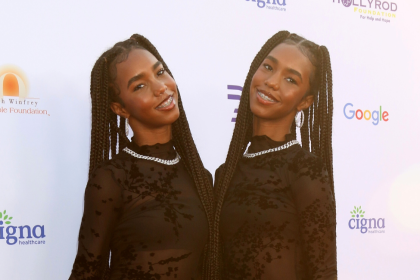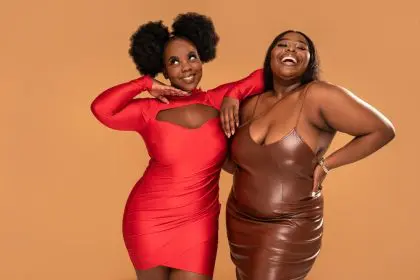The most stylish people walking down streets worldwide share a common secret that has nothing to do with their bank account balance. Their polished, expensive appearance stems from understanding fundamental principles that create luxury aesthetics without luxury price tags.
True style sophistication emerges from strategic choices rather than spending power. The difference between looking wealthy and looking like you’re trying too hard often comes down to subtle details that cost virtually nothing to implement.
This knowledge gap explains why some people in designer clothing still appear disheveled while others in budget finds look effortlessly chic. Understanding these principles transforms anyone’s wardrobe potential regardless of shopping budget constraints.
The psychology behind expensive-looking style
Expensive appearance relies more on visual harmony and attention to detail than actual garment costs. The human eye responds to clean lines, proper fit, and cohesive color schemes regardless of price tags attached to individual pieces.
Quality appearance stems from understanding how different elements work together to create polished looks. This holistic approach considers everything from fabric care to accessory coordination in building sophisticated personal style.
The confidence that comes from feeling put-together translates into body language and presence that enhances any outfit’s impact. This psychological component often matters more than individual clothing items in creating expensive impressions.
Master the foundation of luxury aesthetics
- Perfect fit transforms everything instantly. Clothes that fit properly immediately elevate appearance regardless of their original cost. Taking budget finds to a tailor creates custom-like results for fraction of designer prices.
Simple alterations like hemming pants, taking in waists, or shortening sleeves make dramatic differences in overall appearance. These modifications cost far less than buying expensive clothes while delivering superior results compared to ill-fitting designer pieces.
The investment in basic tailoring pays dividends across entire wardrobes. Learning to identify which pieces benefit most from alterations helps prioritize spending for maximum visual impact.
Build a sophisticated color foundation
- Strategic color coordination creates instant polish. Expensive-looking wardrobes rely on cohesive color palettes rather than trendy pieces that quickly look dated. Neutral foundations provide versatility while reducing decision fatigue.
Classic combinations like navy and white, black and cream, or gray and camel create timeless sophistication that transcends seasonal trends. These color partnerships work across price points while maintaining elegant appeal.
Limiting color palettes to three or four complementary shades creates cohesive looks that appear intentionally curated. This approach makes mixing and matching effortless while ensuring every combination looks purposeful and polished.
Invest strategically in high-impact pieces
- Quality basics outperform trendy statements. Building expensive appearance starts with investing in well-made foundation pieces that serve multiple outfit purposes. These items cost more initially but provide better long-term value.
White button-down shirts, well-fitted blazers, and classic trousers form expensive-looking outfit foundations. These pieces mix and match endlessly while maintaining sophisticated appeal across various occasions and seasons.
The cost-per-wear calculation favors quality basics over trendy pieces that quickly become outdated. Spending more on frequently worn items while saving on seasonal trends creates balanced, expensive-looking wardrobes.
Perfect the art of accessory coordination
- Thoughtful accessories elevate budget outfits dramatically. Simple additions like quality belts, structured handbags, or classic watches create expensive impressions without requiring complete wardrobe overhauls.
The key lies in choosing accessories that enhance rather than overwhelm outfits. One or two well-chosen pieces often create more impact than multiple competing elements that dilute overall aesthetic appeal.
Matching metal tones across all accessories creates cohesive looks that appear carefully planned. This attention to detail signals sophistication while requiring no additional spending beyond initial accessory selection.
Maintain impeccable grooming standards
- Flawless grooming outweighs expensive clothing every time. Well-maintained hair, clean nails, and good hygiene create expensive impressions that no amount of designer clothing can replace when these basics are neglected.
Regular haircuts maintain polished appearance even with simple styles. Professional grooming doesn’t require expensive salon visits but does demand consistent attention to personal maintenance routines.
The contrast between expensive clothing and poor grooming creates jarring impressions that undermine style efforts. Prioritizing grooming basics ensures that budget clothing looks as intended rather than appearing cheap.
Master fabric care for lasting luxury
- Proper garment care extends life while maintaining appearance. Expensive-looking clothes require consistent maintenance through appropriate washing, pressing, and storage techniques that preserve their original condition.
Understanding fabric care instructions prevents premature aging that makes budget pieces look cheap. Simple steps like using gentle cycles, air drying, and proper hangers maintain garment structure and appearance.
Professional cleaning for special pieces costs less than replacement while ensuring garments maintain their expensive appearance over time. This investment approach treats budget finds with the same care given to luxury items.
Create signature style through consistency
- Developing personal uniform eliminates style confusion. Identifying flattering silhouettes, preferred colors, and favorite combinations creates signature looks that appear expensive through their consistency and intentionality.
Personal uniforms reduce decision fatigue while ensuring every outfit choice enhances individual appearance. This approach focuses spending on perfecting specific looks rather than following every trend.
Consistency in style choices creates memorable personal branding that appears more expensive than constantly changing looks. This approach builds reputation for good style while working within budget constraints.
Shop strategically for maximum impact
- Timing purchases around sales maximizes budget potential. Understanding retail cycles allows strategic shopping that acquires quality pieces at reduced prices without compromising style goals.
End-of-season sales, clearance events, and off-season shopping provide access to higher-quality items at budget-friendly prices. This approach requires patience but delivers superior results compared to impulse purchases.
Researching brands and understanding their quality levels helps identify genuine bargains versus items that appear cheap regardless of price reductions. This knowledge prevents disappointing purchases that fail to achieve expensive appearance goals.
Perfect the details that matter most
- Small touches create big impressions. Details like pressed clothing, lint-free garments, and proper shoe maintenance signal attention to quality that expensive appearance requires.
These finishing touches cost virtually nothing but create dramatic differences in overall presentation. Spending five minutes on final outfit preparation often determines whether looks appear expensive or careless.
Carrying quality over quantity into detail management ensures that budget outfits receive the same attention typically given to expensive clothing. This commitment to excellence shows in final appearance results.
Build confidence through preparation
- Confidence amplifies every style choice. Feeling prepared and put-together translates into body language and presence that enhances any outfit’s impact regardless of its actual cost.
Taking time to plan outfits in advance reduces morning stress while ensuring thoughtful coordination. This preparation shows in improved posture and confidence throughout the day.
Understanding what works for individual body types and style preferences eliminates guesswork while building confidence in personal style choices. This self-awareness creates expensive impressions through authentic personal expression.
Advanced techniques for style sophistication
Layering creates visual interest while maximizing wardrobe versatility. Understanding how different textures and weights work together allows creating complex looks from simple pieces.
The rule of thirds applies to outfit coordination just as it does to photography. Balancing proportions through strategic layering creates visually pleasing combinations that appear professionally styled.
Understanding body proportions helps identify which trends to embrace and which to avoid. This knowledge prevents style mistakes that can make expensive clothing look cheap while helping budget pieces appear more expensive.
Seasonal adaptation strategies
Transitional dressing extends wardrobe usefulness while creating sophisticated looks appropriate for changing weather. Understanding how to layer and adapt pieces creates expensive appearance through apparent wardrobe depth.
Seasonal color adaptation keeps looks fresh while working within established palettes. Adding seasonal elements through accessories rather than complete wardrobe changes maintains expensive appearance while controlling costs.
Understanding fabric weights and their appropriate seasons prevents style mistakes that signal inexperience. This knowledge helps build wardrobes that look intentionally curated rather than randomly assembled.
Long-term wardrobe building
Expensive appearance develops over time through consistent choices rather than single shopping trips. Building quality wardrobes requires patience but delivers superior results compared to quick fixes.
Understanding personal lifestyle needs helps prioritize purchases for maximum utility and appearance impact. This focused approach prevents wasted spending on items that don’t enhance overall style goals.
Regular wardrobe evaluation identifies gaps while preventing impulse purchases that don’t serve long-term style objectives. This systematic approach builds expensive-looking wardrobes through strategic decision-making.
Maintenance routines for lasting impact
Developing systems for garment care, organization, and rotation ensures that expensive appearance efforts yield lasting results. These routines become second nature while protecting wardrobe investments.
Understanding when to repair, alter, or replace items prevents expensive appearance from deteriorating over time. This maintenance mindset treats budget pieces with the same care given to luxury items.
Regular closet organization maintains wardrobe functionality while inspiring better outfit coordination. This organizational approach supports expensive appearance through improved daily style choices.
The compound effect of style choices
Small improvements in multiple areas create dramatic overall results that exceed individual effort investments. This compound effect explains how budget wardrobes can appear more expensive than poorly managed luxury collections.
Consistency in applying these principles builds reputation for good style that enhances career and social opportunities. This long-term impact justifies initial effort investments in developing expensive appearance skills.
Understanding style as skill rather than spending allows continuous improvement regardless of budget changes. These abilities provide lasting value that transcends temporary financial limitations.












